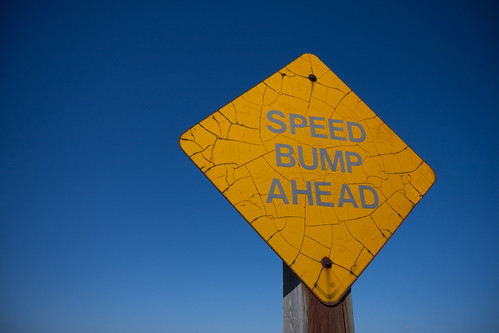When the AP released the Youtube, Obama’s Limo Gets Stuck, the world got a shocking glimpse at how one of  the globe’s most heavily protected and invested-in men became helplessly pinned over a menacing concrete angle, barely larger than a speed bump. The allusion here is to those companies who have poured 10-20-30-maybe 60 thousand dollars into a fancy custom social media campaign, with all the bells, whistles and promises, only to have it break down over a small bump in the road, like Obama’s presidential limo did.
the globe’s most heavily protected and invested-in men became helplessly pinned over a menacing concrete angle, barely larger than a speed bump. The allusion here is to those companies who have poured 10-20-30-maybe 60 thousand dollars into a fancy custom social media campaign, with all the bells, whistles and promises, only to have it break down over a small bump in the road, like Obama’s presidential limo did.
To many corporate social media managers who see a blog like this as a stark speed bump warning before crisp blue skies, we might add that there isn’t really this gigantic hurdle out there for which to look out–it’s more like a series of smaller ones that won’t bring your show to a slamming halt, but over time will loosen crucial parts to a deafening rattle or worse cause them to fall off in mid-travel.
The 100 mile journey
Mile 25: After overcoming the learning curve to get your social media campaign on the road, it’s easy to hit the first ruts just when things begin to seem a little easier. For most this is simply known as slacking off. Social media managers do that too you know. They fill the seats with people, start the conversation, and poof, they’re gone; off researching new channels, distracted over the coolest new social games, watching webinars, or whatever. If this happens you’ll be lucky to make it to mile 50 without losing your way.
Mile 50: This is a good place to check the map. It’s so easy to make good mileage in the wrong direction. The best way to do this is to be constantly reviewing instruments (like Facebook’s Insights, Google Analytics, etc.) to make certain that you’re heading where you want to be going and making good time getting there (without hitting the bumps).
Mile 75: So you’ve managed to get here without totally boring your audience, or yourself and to your satisfaction, everyone is ready for the next leg. Well you’ve already built up your page, and said a bunch of interesting stuff, so what more do they want from you? Let’s flip this around, think about it in terms of what you want from them–some feedback and a little user independence. In order to get that you’ll have to reward those that are already doing it with complements. Also, try changing your “interesting” social media posting strategy to one that engages fans with questions.
Mile 100: As we all know, the journey doesn’t end here. It goes on. It may change tracks, or even vehicles, but the most important thing to remember is that it is that kicking back isn’t an option. Stay in touch (Engage, Engage, Engage) with your fans, industry news, and remember to heed Kurt Hahn’s advice about how to get the most from your team–it isn’t through pushing them to do something, but pulling through the journey together, like he said: ” we are crew not passengers.”
